by Deborah Abernethy and Mike McLeod
$4,139.89 (23 bids, 9 bidders): Maxfield Parrish Antique Edison Mazda Electric Light Bulb Store Display Vintage.
Offered for sale is a very rare and beautiful Edison Mazda store display from the 1920s. This display is in all original condition and features artwork by Maxfield Parrish who was commissioned to do some of the most attractive and successful marketing that General Electric ever did. Included is an array of authentic antique carbon filament lamps. I have shown it lit on a dimmer and would recommend displaying it in the same manner so that the antique bulbs last for a long time.
The display stands 23 1/2 inches tall plus the height of the light bulbs. The rear of the display has a push-in switch-activated socket for testing bulbs at the counter of a store where this would have originally been displayed. Often found in rusted and heavily worn condition, this example is very nice and makes an incredible display. Everything works and is ready to use. There are some minor chips to the porcelain edges on a few of the sockets, and one switch lever is partially missing, but the switch still works perfectly. This display is ready to use and enjoy.
(Photo, eBay seller roscoepug)
Maxfield Parrish produced illustrations for GE/Edison Mazda for use in their calendars between the years 1918 and 1932. While he was known in art circles, GE put these advertising calendars in about a quarter of the homes in America, making him known to people far outside the art market. While other artists did produce works for GE, Maxfield Parrish is best known with these Mazda Edison calendars.
An identical lamp (with different bulbs) was shown on an episode of the Antiques Roadshow (season 22, episode 15) and was stated that at auction it was expected to bring between $3,000 and $5,000. This supports that statement.
$6,680 (29 bids, 21 bidders): Small Antique Civil War CS Georgia Secessionist Silk Bible Flag.
Early 20th century, this authentic silk Confederate Bible flag with an engraving of Robert E. Lee and two printed General Lee pamphlets was framed under glass. They originally belonged to William J. Kaland. His collection of Mathew Brady photographs was well known, but he also collected records. In 1962, he loaned an extensive Civil War collection of authentic artifacts, which was the beginning of the Freeport Historical Museum. He also became its first president. The rare, Confederate Bible flag in this auction came from his granddaughter who has owned it for many years after Mr. Kaland gave it to her as a gift.
Measuring only 4 5/8″ tall by 8 3/4″ long, not counting the attached ribbon, this hand-sewn silk Bible Flag depicts an early example of the Secessionist, First National Pattern, Stars & Bars. I was able to find several examples of Confederate Bible flags, each with different numbers of stars. The lowest number of stars I could find was seven; this flag has only five stars. (One is missing, but the thread is still there.) As other states succeeded, stars were added, and the fifth state to secede from the Union was Georgia.
In the photographs, you can see that the colors of the silk have faded, and there is some separation. Along with this flag is an antique engraving of General Robert E. Lee. It measures 10 3/8″ by 12 1/8″ and has some toning and chips to the edges. Also included are two printed hand bills. One is dated 1869 and is titled, “The Confederate Marylander’s Welcome of Gen. Robert E. Lee.” There are some fold lines and crinkled corners. The last item is titled, “Lee’s Farewell Address.” This hand bill is perfect!
(Photos, eBay seller wwolst12)
Bible flags are very hard to find and spend little time on the market. I would say the buyer got a rare find.
$10,320 (16 bids, 8 bidders): Antique Wind Up Mechanical Clockwork Train – Hand Painted Tin – Marklin.
This is an original clockwork or mechanical train that winds up. This one does not have a winding key and probably has not been operated for many years. It includes a locomotive and tinder, two passenger cars, and a caboose. All of the pieces seem to be original to the set. The locomotive is marked “GEBRAUCHMUSTER.” The train and cars are in good shape with an antique patina but may have some surface rust or pieces missing. I noticed there is the trim bar missing from one side of the boiler. All of the paint and hand-painted details and graphics are nice. I have a railroad tunnel also listed that could be part of this set. Please look at the photos for exact condition. This is from an old family collection and has been stored in a clean, dry, smoke-free environment.
(Photo, courtesy of eBay seller davidk1960.)
$2,754 (33 bids, bidders): 14 Antique Inlaid Mother-Of-Pearl Buttons By N.R. Goodyear Co. Patent 1851.
A set of 14 antique buttons with shell inlays. Brass or bronze loop shanks. Measure approximately one inch. Previously owned and in good condition. One may have some shell loss upon close inspection but overall very nice.
(Photo, courtesy of eBay seller lkcme5.)
The Novelty Rubber Co. is best known and collected for their Civil War uniform buttons. The Novelty Rubber Company, operated in New York and New Jersey from 1855 to 1865, and produced hard-rubber buttons using Goodyear’s patent.
Deborah Abernethy is a certified appraiser with the International Association of Appraisers. She can be contacted at 404-262-2131 or Deborah@expert-appraisers.com. Her website is www.expert-appraisers.com.





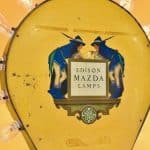
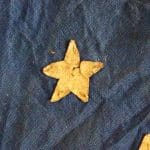
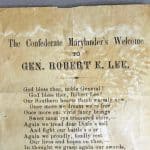
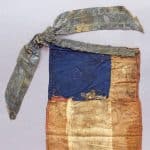


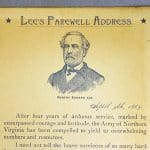
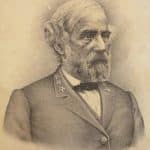
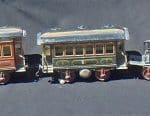

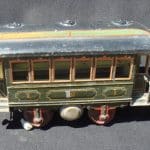


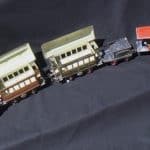

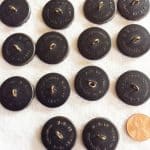
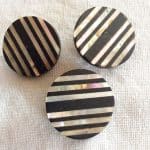



Related posts: